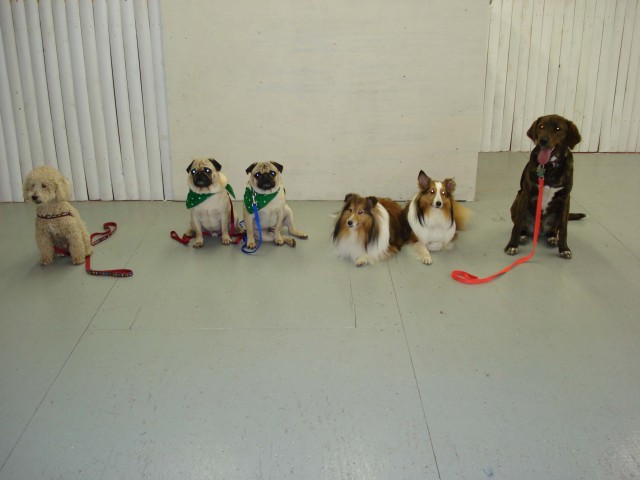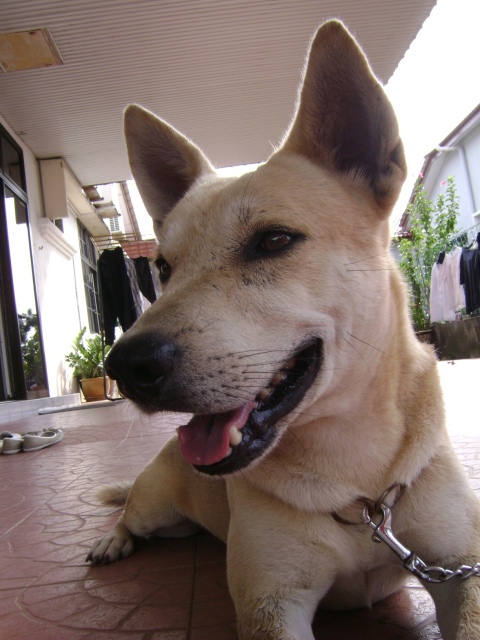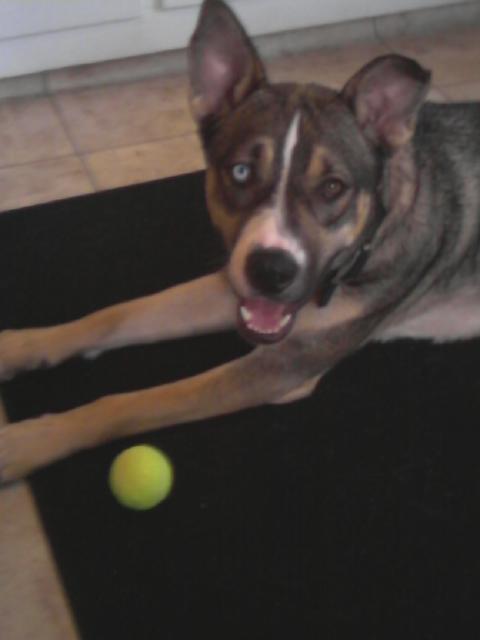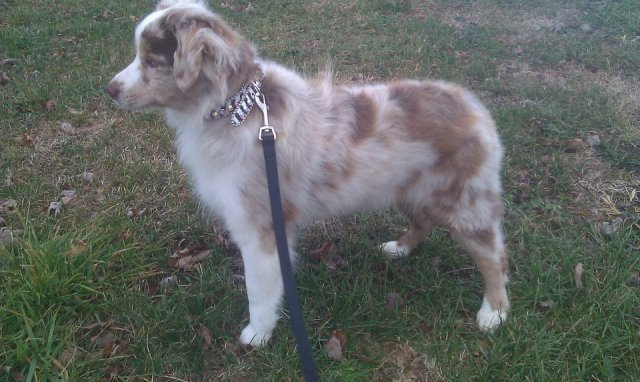Question2 months ago I took in a Border Collie that had been "dumped" at a rest area. Very well behaved dog, guessing about 2 years old, knows basic commands, not aggressive. Took to a collar quickly, but each time I try a leash, he cowers or tries to escape. Not sure if he was chained up in his former life, or if abuse was in place. I would like to be able to train him to walk with a leash, but don't want to traumatize him further.
AnswerThe first thing you want to do is make certain you have a clean bill of health from your veterinarian so you know there are no underlying concerns with your dog. Once you have that, you'll want to start working on behavior modification and training.
The leash concern could be as simple as how you are putting the leash on and to the dog your body posture may be telling him something different than you are intending. For example, if you are bending over his body, he may be interpreting this as a dominance position and that could be intimidating.
What you want to try to do is get the dog comfortable with the leash as a good thing. If he likes a certain type of treat, give him some while letting him see the leash and sniff it. Then slowly work into his being accepting of it -- with treats if that helps -- until you are able to clip it on with no troubles.
Here are some links that might assist you. If you don't see improvements, please contact me and let me know what you have tried so far and what is or is not working. Remember one big step is to be sure your thoughts about his potential former life don't cloud what is going on right now. Dogs are in the moment animals and he will realize that you are treating him well and that should help you progress quickly.
Good Luck!
http://outlawchinooks.com/articles.html
http://outlawchinooks.com/Pack_Leader.html
http://outlawchinooks.com/
Positive Basics
No matter what you are training, dogs, cats, horses, spouses, children, the basics are the same. To change behavior, change both how you interact and the timing of the interaction. Misbehaving should not illicit games, food, being let outside because this rewards the behavior you are seeking to change. Pay attention to good behavior and take that time to play, talk and treat or feed your pet then. Animals learn quickly what behavior gets rewarded, and will try to seek your approval.
Training today concentrates more on positive reinforcement which means you add something rewarding or pleasant to your pet's environment to increase the likelihood of getting a desired behavior. The other side of positive reinforcement is extinction, the removal of all positive reinforcement to decrease or extinguish the unwanted behaviors. (You may have seen this theory in school, think of Pavlov's Dogs, and your Psychology classes.)
Start thinking of punishment in a new light, consider it more like discipline and less like beating a red-headed stepchild. With all animal behavior issues there are three basic behavior modifications: reinforce the behavior you want to see when it happens; removing positive reinforcement and attention for the behavior you don't want to see when it happens; catching the animal in the act and startling them into quitting and then redirecting them to something more appropriate.
The positive approach to training seeks to teach animals without abusing them. As with any training method there are some guidelines to correction.
Do not punish/discipline/correct the dog after the fact. If you come home from work and pooch has eaten the dry wall, you have missed your chance. You need to see pooch committing the crime to correct the behavior.
Do not use pain or corporal punishment. If you inflict pain on your dog, you may create an aggressive dog that is more of a problem than the issues you were having.
Do not punish the dog by isolating them in the yard or stuffed into their crate / kennel / carrier away from interaction.
Do not jerk on a training collar (sometimes called a choke chain) to correct your dog. Training collars used incorrectly can cause permanent damage to you pet's windpipe, neck and spine. Learn how to use your collars correctly to avoid these issues.
Using positive training methods teaches your pet your rules so they don't have an opportunity to invent their own rules.

 Crystal the beagle
Question
Crystal
Crystal is 8 1/2 years old,she is a be
Crystal the beagle
Question
Crystal
Crystal is 8 1/2 years old,she is a be
 Male Chesador
QuestionWe have a 8 month old puppy that is more than s
Male Chesador
QuestionWe have a 8 month old puppy that is more than s
 how to train a dog?
Questiondog
QUESTION: hi,I want to ask you,how t
how to train a dog?
Questiondog
QUESTION: hi,I want to ask you,how t
 Dog tackling
Question
My dog
I would like to know a technique or a t
Dog tackling
Question
My dog
I would like to know a technique or a t
 Jumping.
Question
Stetson
I have a 8 month old, male mini
Jumping.
Question
Stetson
I have a 8 month old, male mini